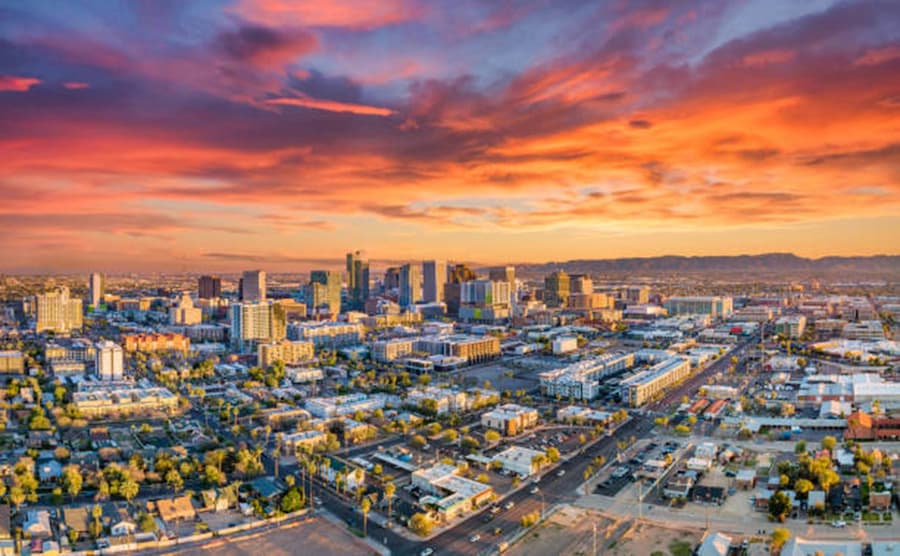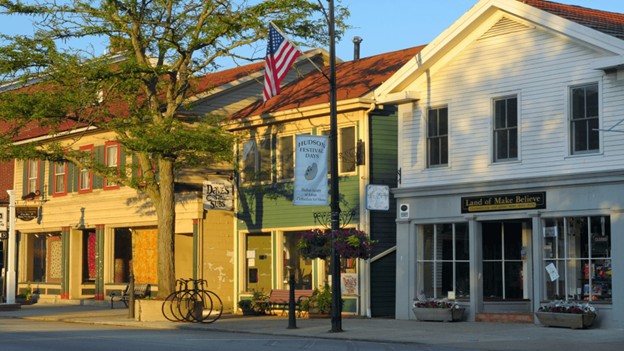
While much attention focuses on major metropolitan areas, a remarkable transformation is taking place in small cities across the country. With families seeking stronger community ties, more affordable living, and the benefits of hybrid and remote work schedules, these emerging urban centers are experiencing unprecedented growth. This brings both opportunity and significant challenges to communities that must maintain their character while adapting to rapid change
Key Takeaways
- Small cities across America are experiencing unprecedented growth due to remote work and affordability
- Communities are facing infrastructure challenges, particularly in parking and transportation
- Smart technology solutions are helping cities maintain their character while managing growth
- Success stories from cities like Davidson, NC, and Celina, TX provide valuable insights

The scale of this transformation becomes clear when looking at specific examples. Celina, Texas, part of the Dallas-Fort Worth metroplex, saw its population surge from 16,739 in 2020 to an estimated 43,317 in 2023. This explosive growth rate exemplifies the dramatic changes happening in small cities across America, particularly those within reach of major metropolitan areas but far enough away to maintain their distinct identity. This rapid growth brings significant challenges, particularly in infrastructure, housing availability, and public services.
Pickerington, Ohio, founded in 1815, offers a clear example of how historic small towns are adapting to modern growth pressures. As part of the Columbus metro area, Pickerington has grown steadily, reaching over 23,000 residents as of 2020. The city’s Olde Village district, which serves as a hub for local businesses and community events, exemplifies both the appeal of small-city life and the challenges that come with increasing popularity. The district’s historic character draws visitors and new residents, but this same attractiveness creates pressure on the area’s infrastructure and threatens to undermine the very qualities that make it special.
Infrastructure Under Pressure
The infrastructure challenges facing these growing communities extend far beyond parking. Roads designed for small-town traffic volumes now handle suburban-level congestion. Water and sewer systems built for thousands strain to serve tens of thousands. Public services, from schools to emergency response, must scale quickly to meet growing demand. These challenges are particularly acute in cities like Celina, where the pace of growth outstrips traditional infrastructure planning timelines.
The environmental impact of rapid growth presents another significant challenge. As more cars crowd downtown streets searching for parking, emissions increase. Traditional solutions like building more parking lots can worsen environmental problems and detract from the walkable, human-scale environment that makes small cities attractive. This has led many communities to seek innovative, AI-driven solutions that can accommodate growth while promoting sustainability.
Success Stories in Smart Growth
Davidson, North Carolina

Davidson, North Carolina’s technology-focused efforts to improve downtown accessibility have yielded impressive results. The city achieved a 30% increase in parking space utilization efficiency through better management of existing resources, demonstrating that smarter use of existing infrastructure can be as effective as building new facilities. This improvement not only enhanced the downtown experience but also helped preserve the area’s historic character by avoiding the need for extensive new construction.
Read Davidson’s full case study
Celina, Texas
Celina, Texas, has embraced its identity as the first gigabit city in Texas, demonstrating how small cities can leverage technology to manage growth. This infrastructure investment positions the city to better handle future expansion while maintaining quality of life for residents. Beyond just providing high-speed internet, Celina’s approach shows how technology can help small cities compete in the modern economy while preserving their unique character.
Pickerington, Ohio

Pickerington’s approach to managing its Olde Village district shows how detailed analysis can inform better urban planning. By studying usage patterns and community needs, the city has been able to make targeted improvements that preserve the area’s historic character while improving its functionality. The city’s emphasis on gathering spaces and pedestrian-friendly environments has helped maintain the community connections that make small cities special.
Explore Parknav’s smart city integrations
Looking Forward: Sustainable Growth Strategies
The experiences of these growing small cities highlight several key principles for sustainable growth. Successful cities anticipate infrastructure needs before they become critical, while ensuring growth management balances development with preservation of the elements that make each community unique. Making better use of existing infrastructure often proves as important as building new facilities, and smart growth strategies must account for environmental impact, particularly in reducing emissions from traffic congestion.
Smart growth also means thinking beyond traditional solutions. Instead of simply building more parking lots or widening roads, successful small cities are exploring ways to make their downtowns more walkable, encourage alternative transportation, and use technology to make parking more efficient. These approaches help preserve the human scale and community connections that make small cities attractive while accommodating growth.
Equally important is the preservation of community character amid rapid change. Growing small cities must find ways to integrate new residents and businesses while maintaining the sense of community that attracted them in the first place. This often means creating gathering spaces, supporting local businesses, and ensuring that new development complements rather than overwhelms existing community character.
The Road Ahead
The transformation of America’s small cities represents both a challenge and an opportunity. While rapid growth brings significant hurdles, it also offers the chance to reimagine how urban spaces can function in the 21st century. By focusing on smart solutions to fundamental challenges like infrastructure and transportation, these cities can build the foundation for sustainable, livable communities that maintain their character while embracing the future.
The future of urban America may well be shaped not by its largest cities, but by how successfully its small cities manage their growth. Their ability to maintain their distinct character while adapting to serve larger populations will help define the next chapter in American urban development. As these communities continue to grow and evolve, their experiences will help shape our understanding of what sustainable urban development can look like in the 21st century.
Andy Ramm is the Chief Product Officer at Parknav
Want to learn more?
Let’s talk parking…and much more !

We’d love to answer all your questions
Let us know how we can help solve all of your parking needs, parking restrictions, traffic control, smart city information….or just say hi !


